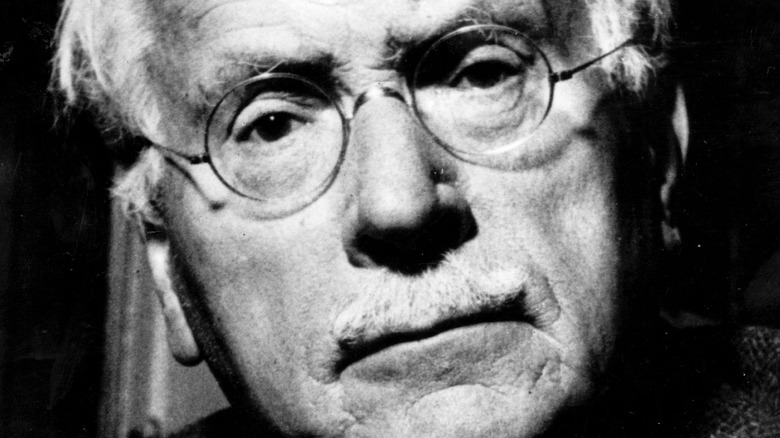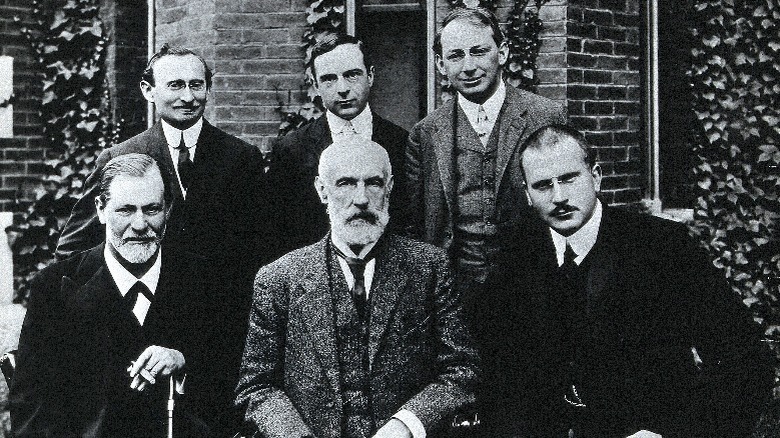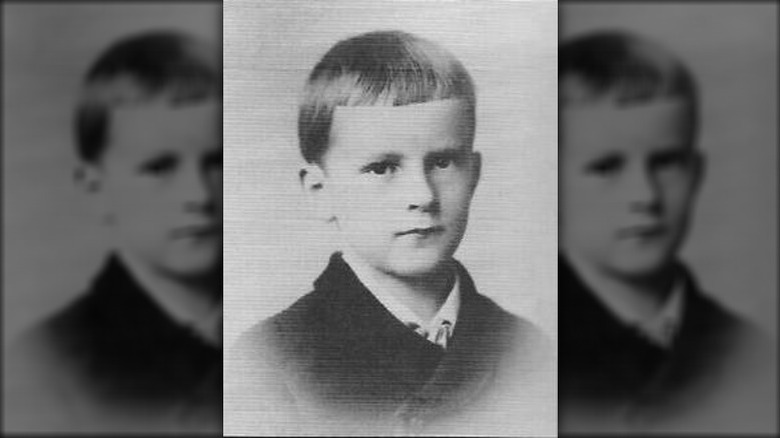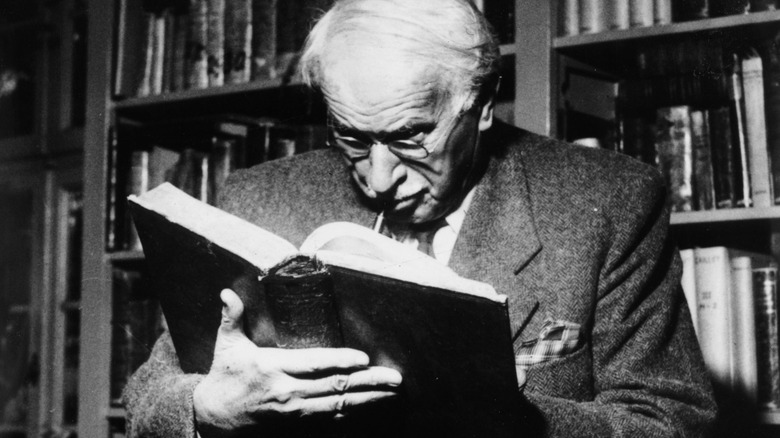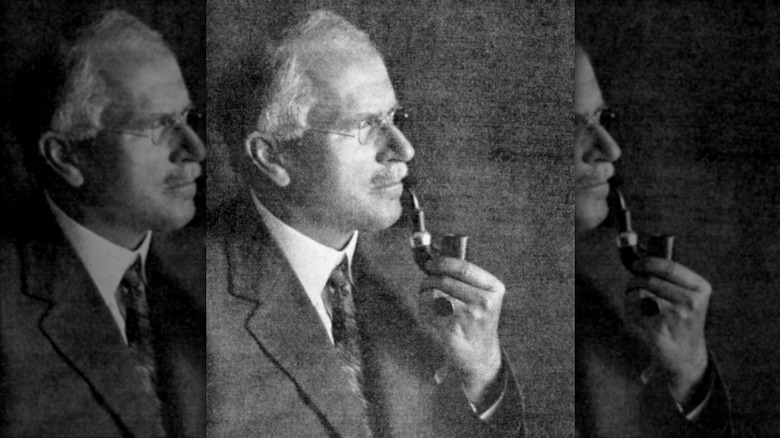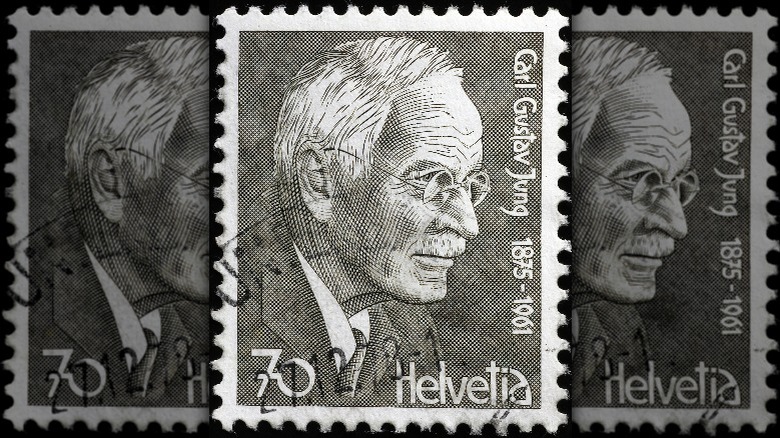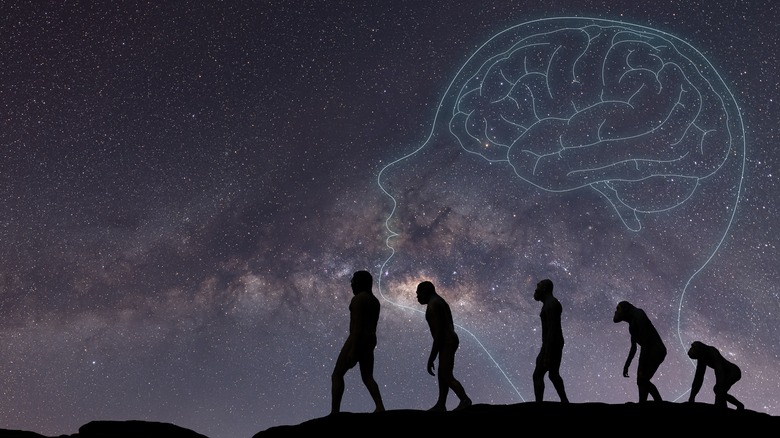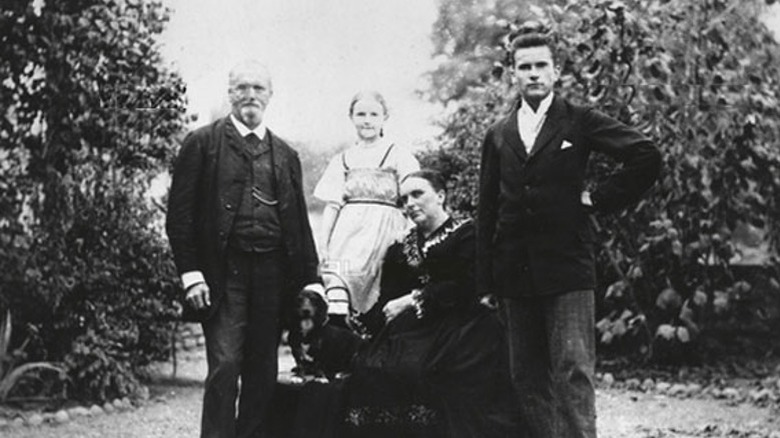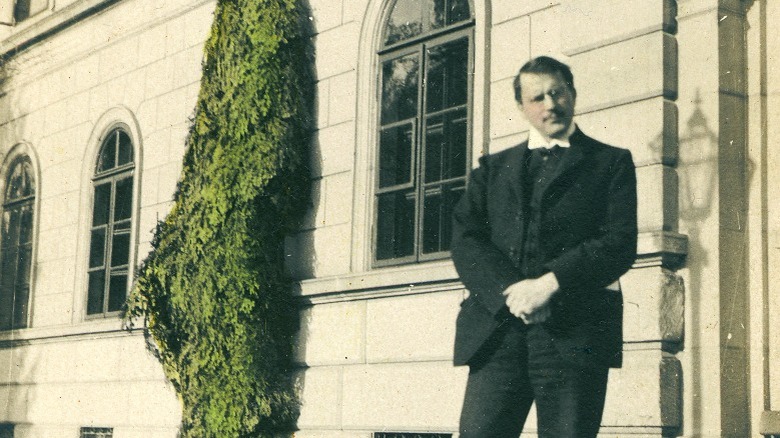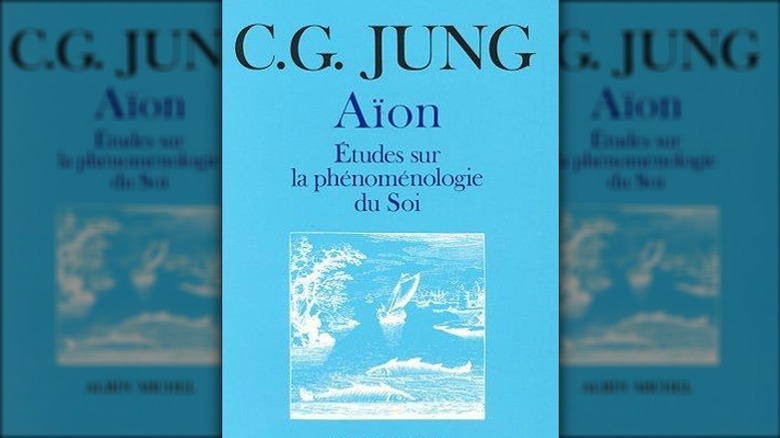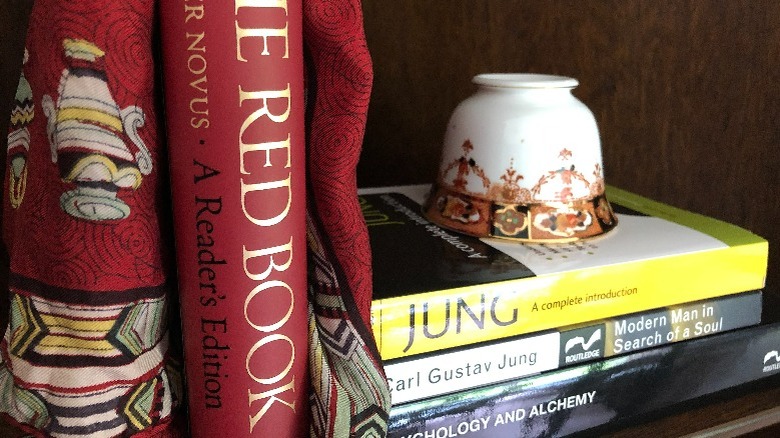Carl Jung: 11 Beliefs On Personality And Life
The Swiss psychologist Carl Jung (1875-1961) is perhaps second only to Sigmund Freud himself in terms of his role in the establishment of psychoanalysis, as a result, how the human mind has been understood for the last one hundred years. In fact, he studied alongside Freud, with whom his thought shares many parallels, before branching off to construct his own system of beliefs about consciousness, the development of the human mind over humanity's existence, as well as mental growth throughout our lifetimes. Throughout his prolific career, Jung had several breakthroughs in his theory of the mind that are still touchstones for millions of people today — indeed, you likely know several of his key terms already without realizing it. Today, Jung's name is also everpresent in YouTube videos offering life advice and self-help books.
Jung's beliefs seem to chime so much with modern times that back in 2012, writer for The Guardian Andrew Samuels claimed that Jung was shaping up to be a thinker whose influence looked set to permeate the 21st century. So what exactly were his key beliefs, and why are they worth knowing about today? Here are 11 of his core ideas.
We have a conscious and an unconscious mind
The idea that the human mind has submerged depths that we are not entirely in touch with or in control of is found everywhere in popular culture today. Think of all the movies and TV shows in which a character has a flashback to some long-forgotten memory, say, which, when triggered, gives them a new vantage point to understand their life. Such concepts come from psychoanalysis, pioneered by figures such as Sigmund Freud and Carl Jung (pictured bottom left and bottom right, respectively) in the late 19th and early 20th centuries.
Jung had first become an acolyte of the elder Freud while serving as an assistant physician at a mental hospital in Zurich in 1900, reading Freud's work at a time when it was little accepted. After the initial contact, the two began a period of collaboration with a series of letters, through which they discussed various topics related to the mind from 1906 to 1914, at which point they had a decisive and reportedly bitter break as their ideas concerning the human mind became irreconcilable.
While the two shared the belief that the mind, or "psyche," is made up of conscious and unconscious parts, Freud and Jung disagreed on its structure beyond that and would go on to form different theories of the mind. Whereas Freud later postulated that the mind is made up of the animalistic id, the idealistic superego, and the conscious "I" of the ego, Jung would argue that the ego is only a small part of the psyche, which acts as "gatekeeper" in the encountering of facts, ideas, and sensations and arbitrate whether such information will be consciously considered, or be submerged in the "personal unconscious," and either forgotten or repressed.
We all have complexes
The idea of a mental "complex" is another aspect of psychoanalysis — or "analytical psychology," as Carl Jung would later describe his own work – that is well-known and often referenced in everyday life. The most famous of the psychological complexes uncovered by the psychoanalysts is the so-called "Oedipus Complex," coined by Sigmund Freud, which, referencing the classical play "Oedipus Rex" by Sophocles, suggests that the infant male human mind goes through a period of sexual attraction towards the child's mother while resenting the father.
But while Freud's work remains the more famous, it was in fact Carl Jung's work on psychological complexes that was the more pioneering. Calvin S. Hall's "A Primer of Jungian Theory" says that it is due to Jung (pictured as a young boy) that we use the term today. First developed in early word association experiments with mentally ill patients in Jung's early career and reviewed later in a famous lecture in Zurich in 1934, the theory postulates that contained in the "personal unconscious" are groups of closely associated emotions, thoughts, and beliefs, focused around a certain theme which govern our conscious behavior without knowing it: e.g., an unconsciously strong attachment to one's mother, a "mother complex," would lead to a person mentioning their mother often, and gravitating towards people who remind them of their mother.
Complexes are so central to Jung's analytical psychology that he briefly described his work as "complex psychology."
Our psyche is also made of the 'collective unconscious'
While Sigmund Freud's work explains the human psyche as a closed system, Carl Jung saw external factors as an integral part of the mind. He called this the "collective unconscious," as opposed to the "personal unconscious."
In his essay "The Concept of the Collective Unconscious," originally delivered as a lecture in 1936, Jung offers a definition of one of his key concepts which he claims had been widely misunderstood. He argues that while the personal unconscious is a subliminal part of the psyche of which we are not actively aware or able to control like our conscious mind, the personal unconscious is nevertheless made up of things that we have previously experienced and that we were once conscious of. For example, a person may have experienced something traumatic or embarrassing, which their ego then represses. This then becomes part of their personal unconscious, where the repressed experience and its associated emotions may come to affect the behavior of the person unconsciously in the form of an inferiority complex, for example.
Jung says that the collective unconscious is different because it is not created out of lived experience, but is "hereditary:" put simply, there are shared human beliefs and behaviors that pre-exist in the mind. Jung paralleled the natural pre-existence of such mental material — which he believed has evolved over millennia — with that which has led to the evolution of the physical body. Nevertheless, the collective unconscious as an original idea in psychology has remained controversial due to its unprovability.
We instinctively recognize archetypes
Leading on from Carl Jung's theory of the collective unconscious is another of his most famous and cited ideas: that of "archetypes," which Jung defines in "Archetypes and the Collective Unconscious" as "universal images that have existed since the remotest times." But what does this mean?
Calvin S.Hall's "Primer" tells us that Jung identified countless archetypes over the course of many decades, which included human figures such as the mother, the father, the wise old man, and the trickster, concepts such as birth, death, and God, and objects both natural and manmade such as stars, trees, weapons, and rings. Jung points to the existence of such elements in the fairy tales and myths of disparate people around the world as evidence for their pre-existence in the mind.
However, he is also at pains to point out that the images do not appear fully formed in the mind: instead, pre-existing instincts slowly accumulate material during a person's lifetime so that they eventually become a complex affecting a pattern of behavior. The mother archetype, say, may accumulate material in a person's subconscious in their early life from various mother figures they encounter. Then, when they are due to become a mother themselves, they unconsciously come to adopt the archetype that exists in their psyche. While this example shows that archetypes can be useful over the course of our lives, other archetypes and the complexes around them can be damaging in terms of the behavior they lead to, and need to be uncovered through therapy.
We need to become whole through 'individuation'
The work of Carl Jung is a touchstone for many people today thanks to a central idea that permeates his writing that suggests how to lead a satisfying and mentally fulfilling life.
As noted in Robert H. Hopcke in his "A Guided Tour of the Collected Works of C. G. Jung," Jung shared with his mentor Sigmund Freud the conviction that therapy is necessary to unlock the unconscious, but the two men differed in their approaches. While Freud tended to see universal commonalities in what people needed to face about themselves, Jung believed that true growth involves coming to terms with one's self as an individual. He called this process "individuation," and argued that through aligning the conscious and subconscious parts of the psyche humans might achieve "wholeness" over the course of their lifetimes. "Integration of the unconscious invariably has a healing effect," he claims in his "Symbols of Transformation."
Jung also claims that it is through the engagement with and reconciliation of numerous archetypes that people might best achieve mental and emotional growth, and bring the conscious and unconscious parts of their psyche into alignment.
The human mind is evolving
Carl Jung's work in analytical psychology came in the wake of the evolutionary theories of the 19th century first put forward by the British naturalist Charles Darwin. Darwin's work was controversial in its time, but transformative for many, changing the way people thought about human life. So it is perhaps no wonder that Jung incorporated evolutionary theory into his work.
Jung was one of the first writers to speculate on the mental development of humanity throughout evolution and to chart how human consciousness must have evolved just as the body did. Jung saw a parallel between evolution and individuation, arguing that the thoughts of children are alike to those of lesser-evolved ancient humans (per "Symbols of Transformation") Similarly, the process of individuation leads to mental health and growth in life, which are necessary to negotiate the changing world as we age.
Furthermore, Jung saw individuation — the growth of the human psyche to the point of which that it exists as a true individual — as necessary for the sake of progress and the establishment of a just society, claiming that nations where individuation is unable to thrive come under the thrall of egotistical individuals, such as dictators.
The anima and animus
We now move on to look at some of the specific archetypes that Carl Jung has argued exist in the collective unconscious, and which he says govern the behavior of humans of every culture and background around the globe. The anima and animus are two archetypes that have been discussed widely since Jung first outlined them. There are of special interest today in discussions of gender and are concepts that have received both criticism and support in gender theory.
First laid out in his book "Aion: Researches into the Phenomenology of the Self," Jung (pictured right, with his parents) describes the anima as the feminine "imprint" that exists as part of a man's unconscious, and the animus as the masculine in the unconscious of women. The broad implication is that male psyches are not entirely masculine, nor are female psyches 100% feminine, but rather each gender contains an unconscious part of their opposite which governs unconscious feminine or masculine behavior respectively.
Jung's early work on the anima and the animus perhaps makes for uncomfortable reading today, especially in extended passages that look to definitively say how men vs. women act in arguments, say: for example, he argues that the anima can make men argue in a "womanish" way. His work in this area is arguably also incompatible with modern gender theory that moves away from binary models, though the suggestion that male and female brains are not entirely gendered as opposites may perhaps be described as forward-thinking for the time in which Jung wrote.
We take on many personas
While the concept of a "persona" is fairly commonplace in discussions of actors and other entertainers, it is less well-known in psychology. Carl Jung was especially interested in the idea of personas, and argued that we all adopt different personas all the time, depending on the social situation we find ourselves in, and the actions and interactions expected of us. At the same time, Jung argues that we also show a persona to ourselves, leading to a "false self" that we observe through the effects of our actions, as described in his book "Psychological Types."
While personas can be useful in helping us to navigate many different day-to-day social encounters, it is also true that a lack of self-awareness can lead to a persona taking over, meaning that a person might find themselves living inauthentically. In such cases, they wear a mask not just to the world, but to themselves. Jung would claim that therapy and individuation can allow people to see their true selves and become aware of the masks they wear.
We each contain a 'shadow' self
One of the most widely discussed of Carl Jung's archetypes is the "shadow," sometimes referred to as the "shadow self." In "Aion: Researches in the Phenomenology of the Self," Jung explains how it is the role of the ego to repress undesirable or unwanted aspects of ourselves. These form the "shadow," which may remain entirely repressed throughout our lives if we do not attempt to reach a state of self-knowledge through therapy and individuation.
The critic Calvin S. Hall discussed in "A Primer of Jungian Psychology" that the shadow is considered the most animalistic and base of the archetypes, and that it can be dangerous or disruptive in our lives. However, as Jung notes in "Aion," the interplay of the ego, the persona, and the shadow can lead to the repression of positive traits: Hall gives the example of inspiration, saying that a farmer might repress a desire to write poetry as their persona as a farmer doesn't seem to accommodate it. Such frustrations may then pass over into other destructive behavior arising from the shadow, a multifaceted and powerful archetype in the unconscious mind.
[Featured image by Chetao via Wikimedia Commons | Cropped and scaled | CC BY-SA 4.0]
Synchronicity is more than chance
What are your feelings when you encounter a huge coincidence? If you are religious, maybe you will see it as a sign from God, or that some other supernatural being — or perhaps the universe itself — is communicating with you in some way. It might remind you that you are special, or else give you the sense that everything happens for a reason according to some grand design. Or, if you are a skeptic, you might interpret a coincidence as nothing but blind chance accidentally putting different elements of the world into alignment for once.
Carl Jung's response to coincidences and other related uncanny experiences was his work on what he termed "synchronicity." His book, "Synchronicity: An Acausal Connecting Principle," outlines a view of such experiences that despite arising from his interest in the occult and mysticism nevertheless winds up being neither spiritual nor skeptical in nature. Jung defines synchronicity as "meaningful coincidences," which challenge the "causal" nature of how Westerners tend to view the world, according to Robert H. Hopcke's "A Guided Tour of the Collected Works of C. G. Jung." Jung sees instead that synchronicity is produced subjectively at an emotional level, and as evidence that all things are connected in the psyche and of the existence of the collective unconscious.
Jung believed in the power of mystical experiences
Although it is misguided to dismiss Carl Jung's work on synchronicity as indulging in pseudoscience, the creator of analytical psychology did indeed have an interest in esoteric subjects, particularly those that lead to mystical experiences and ways he believed people might access the unconscious mind.
For example, Jung was interested in the mystical process of alchemy, a tradition going back hundreds of years in which practitioners attempted to transmogrify base materials into precious gold. As he writes in his book, "Psychology and Alchemy," Jung believes that such mystical practices exist in the collective unconscious, and often arise in dreams through which patients can practice individuation. Elsewhere, Jung wrote about ghosts, flying saucers, and other strange and unexplainable human experiences, while his doctoral thesis was written on the subject of "occult phenomena."
Jung kept records of his own mystical experiences and how they precipitated his discovery of various archetypes and aspects of the psyche. These were eventually published in 2009 as "The Red Book," fuelling in part a resurgence in interest in the work of Carl Jung today.
[Featured image by Steve Nimmons via Wikimedia Commons | Cropped and scaled | CC BY 2.0]
